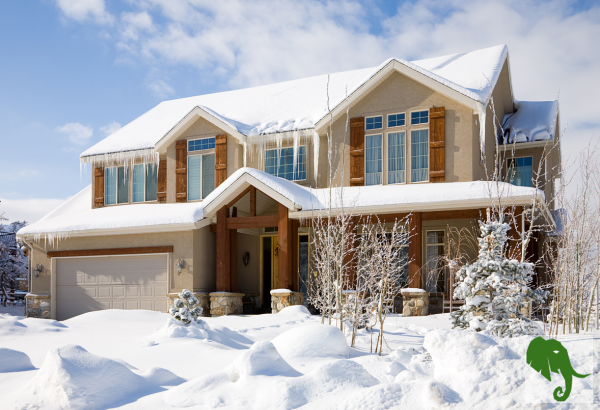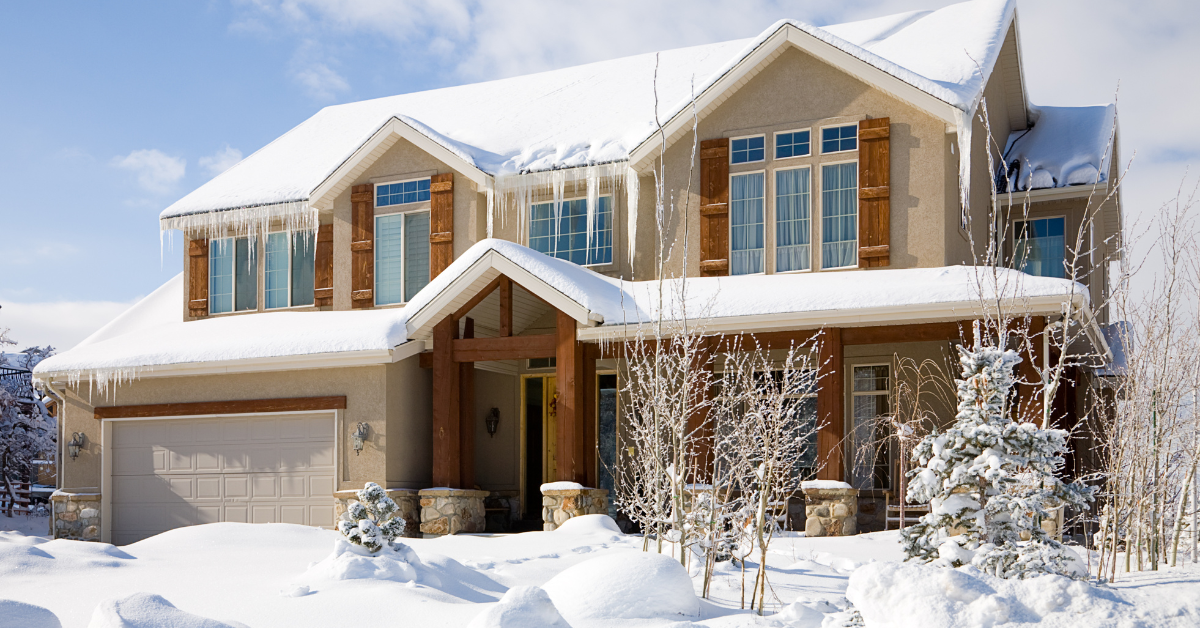
This past Sunday was the first day of fall. Department stores are putting away their summer items as the summer season has ended. Soon the crisp autumn air will give way to the biting chill of winter, and it will be time to prepare our homes for the colder months ahead. Winter brings not just festive joy but also unique challenges that can affect the safety and comfort of your home. Preparing for the colder months isn’t just about stocking up on blankets and hot cocoa; it’s about ensuring your home is ready to withstand the harsh weather conditions to help keep you and your family safe.
In this post, we’ll explore essential tips for preparing your home and ensuring your safety as winter approaches. From preventing fires to protecting your pipes from freezing, here’s how you can get ready for winter with peace of mind.
Heating System Check-Up
Your heating system is the heart of your home during the winter months, and ensuring it’s in optimal condition is one of the most important steps in winter preparation.
- Furnace Inspection: Schedule a professional inspection of your furnace before the cold sets in. A technician can check for any issues such as leaks, clogged filters, or malfunctioning parts that could not only affect heating efficiency but pose safety risks like carbon monoxide leaks.
- Clean Air Filters: Dirty or clogged filters reduce the efficiency of your heating system and may cause it to overheat. Replace or clean the filters every month during the winter to keep air quality high and the system running efficiently.
- Chimney and Fireplace Maintenance: If you use a fireplace, have your chimney inspected and cleaned. Creosote, a highly flammable substance, builds up inside chimneys and can lead to dangerous chimney fires if not removed regularly. Ensure that your damper opens and closes properly to prevent heat loss.
By keeping your heating system well-maintained, you reduce the risk of fire, improve energy efficiency, and ensure you’re cozy throughout the season.
Carbon Monoxide and Smoke Detectors
As you turn on your heating systems and possibly use alternative heat sources, the risk of carbon monoxide (CO) poisoning increases. Additionally, house fires are more common in the winter due to heating equipment, candles, and holiday decorations.
- Test and Replace Batteries: Make sure both carbon monoxide and smoke detectors are functioning correctly by testing them and replacing their batteries. CO detectors should be installed near bedrooms and on every level of your home. Smoke detectors should be on every level, inside bedrooms, and near kitchens.
- Carbon Monoxide Awareness: CO is an odorless, colorless gas that can be lethal at high levels. Install CO detectors near any areas where combustion occurs, such as near your furnace or garage. If your CO detector goes off, evacuate the house immediately and call for emergency help.
- Fire Extinguishers: Winter is the perfect time to check that your fire extinguishers are in good working order and placed in accessible areas, especially in the kitchen and near fireplaces.
Preventing Frozen Pipes
Frozen pipes are one of the most common and costly home disasters during winter. When water freezes in your pipes, it expands, causing the pipes to burst and potentially flooding your home.
- Insulate Pipes: Install insulation around pipes located in unheated areas, such as basements, attics, and garages. Pipe insulation is an inexpensive solution that can prevent the water inside from freezing.
- Let Faucets Drip: On extremely cold nights, remember to let faucets, especially those farthest from the main water line, drip slowly. Moving water is less likely to freeze.
- Disconnect Outdoor Hoses: Drain and store hoses before the first freeze. Leaving them connected can lead to frozen water in the spigot, causing the pipes inside your home to burst.
- Shut Off External Water Lines: If possible, shut off and drain water lines to outdoor faucets and sprinkler systems. This reduces the risk of freezing and bursting.
By taking these precautions, you can avoid the hassle and expense of dealing with burst pipes and water damage.
Winterizing Doors and Windows
Windows and doors are common areas where heat can escape, making your home less energy-efficient can lead to higher heating bills. Winterizing these areas helps maintain warmth and reduce drafts.
- Weatherstripping: Apply weatherstripping around doors and windows to prevent drafts. This simple solution can save a significant amount on energy bills while keeping your home warm.
- Window Insulation Kits: Consider using window insulation kits for older, draftier windows. These kits provide a plastic barrier that adds an extra layer of insulation, reducing heat loss.
- Caulking: Check for gaps and cracks around windows and doors and seal them with caulk. Even small gaps can allow cold air to seep in and heat to escape.
Winterizing your home’s entry points keeps you more comfortable and reduces the workload on your heating system, extending its life and saving on energy costs.
Roof and Gutter Maintenance
Heavy snow and ice can wreak havoc on your roof and gutters. If your roof isn’t prepared to handle the winter load, you could face leaks, ice dams, or even structural damage.
- Roof Inspection: Before winter, inspect your roof for any loose or missing shingles and get them repaired. Ensure that the flashing around chimneys and vents is in good condition to prevent leaks.
- Clean Gutters: Clear out leaves and debris from gutters to prevent blockages. Clogged gutters can lead to ice dams, which can force water under your roof and into your home, causing significant damage.
- Install Gutter Guards: To prevent clogs from forming throughout the winter, consider installing gutter guards. These simple additions allow water to flow while keeping debris out.
Taking the time to maintain your roof and gutters can help you avoid expensive repairs and keep your home safe from water damage during winter storms.
Prepare for Power Outages
Winter storms can cause power outages, leaving you without heat, light, or a way to cook. Being prepared for a power outage can make all the difference in staying safe and comfortable.
- Backup Generator: If you live in an area prone to power outages, investing in a backup generator can keep essential systems like your furnace and refrigerator running. Make sure to follow all safety guidelines when using a generator, including placing it outside and away from windows to avoid CO poisoning.
- Emergency Kit: Have an emergency kit ready, including flashlights, extra batteries, blankets, non-perishable food, bottled water, and a battery-powered radio. If you rely on medical equipment that requires electricity, ensure you have backup power options or an alternative plan.
- Solar Chargers: Consider purchasing a solar-powered charger for your phone and other small electronics. These can be a lifesaver during extended outages, keeping you connected when you need it most.
Clear Snow and Ice Safely
Snow and ice around your home can present a slipping hazard and make it difficult for emergency services to reach you. Keep your home accessible and safe by regularly clearing snow and ice from key areas.
- Shoveling Techniques: Shovel snow frequently, using proper lifting techniques to avoid strain. Push snow rather than lifting it, and if you must lift, bend your knees and keep your back straight. Consider using a snow blower to reduce the physical strain.
- De-icing: Use salt or a de-icing agent on sidewalks, driveways, and steps to prevent ice from forming. Sand can also be used to improve traction in icy areas.
- Check on Neighbors: If you have elderly neighbors or those with mobility issues, offer to help clear their walkways. Snow and ice can be especially hazardous for those with limited mobility.
Conclusion
Winter can be beautiful, but it also brings challenges that require preparation. By taking the steps suggested, you can ensure your home is ready to handle whatever winter throws your way, all while keeping your family safe. From heating systems and frozen pipes to snow removal and emergency preparedness, the key is to plan ahead and take action before the cold sets in.
Remember, preparation is the key to staying safe and warm during the colder months. Take the time now to secure your home, and you’ll be able to enjoy winter knowing that you’re well-prepared for any challenges it brings. Winter is coming—make sure you’re ready!
Related Content

Read other OwnGuard Solutions blog posts
Read our other posts centered around being safer and better prepared.

